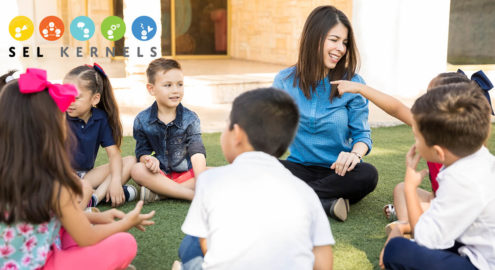Evidence That It Works
In her groundbreaking work on positive emotions, researcher Barbara Frederickson introduces us to the extensive benefits of feeling good, described in her “Broaden-and Build-Theory” of positive emotions. Her findings demonstrate that when individuals experience positive emotions, their awareness broadens. “Broadening” suggests that positive emotions quite literally open your mind. As positive emotions are triggered, you may even think more creatively and solve problems faster.
Fredrickson’s research also pinpoints 10 Positive Emotions, including pride, gratitude, joy, love, amusement, inspiration, awe, interest, serenity, and hope are all positive emotions. Ongoing experiences of positive emotions can help students to develop the mental, physical, and social resources they need to thrive and flourish. When we intentionally enhance our experiences of positivity, we nourish our minds, bodies, and relationships.
Why Does It Matter?
Educators can play a role in supporting students’ emotion regulation skills, helping them to address challenging emotions—as well as stress, anxiety, and depression. However, learning about positive emotions and how to experience more positive emotions can also benefit students’ emotion regulation skills while potentially benefiting student learning.
For example, a student who is feeling joyful might be more open to seeing a different way of viewing a problem, perhaps through the perspective of a peer, than a student who is feeling neutral or negative. Or, a student may be more motivated to learn a new skill if they experience a positive emotion prior to the task, as positive emotions can foster curiosity. Finally, if students are in need of additional resources to manage stress and adversity, experiencing positive emotions can build psychological resources like optimism and self-efficacy. Students who can identify and increase their access to positive emotions can better manage stress.
This lesson’s positive focus may also be particularly important for students who struggle with emotional regulation due to a disability or learning difference. This lesson could be included in a behavior intervention plan (BIP), which features support strategies for skill development so that students no longer need to rely upon challenging behavior to communicate and get their needs met. Teaching positive emotions in this way can be a meaningful intervention strategy and integral to developing self-regulation.







Comments